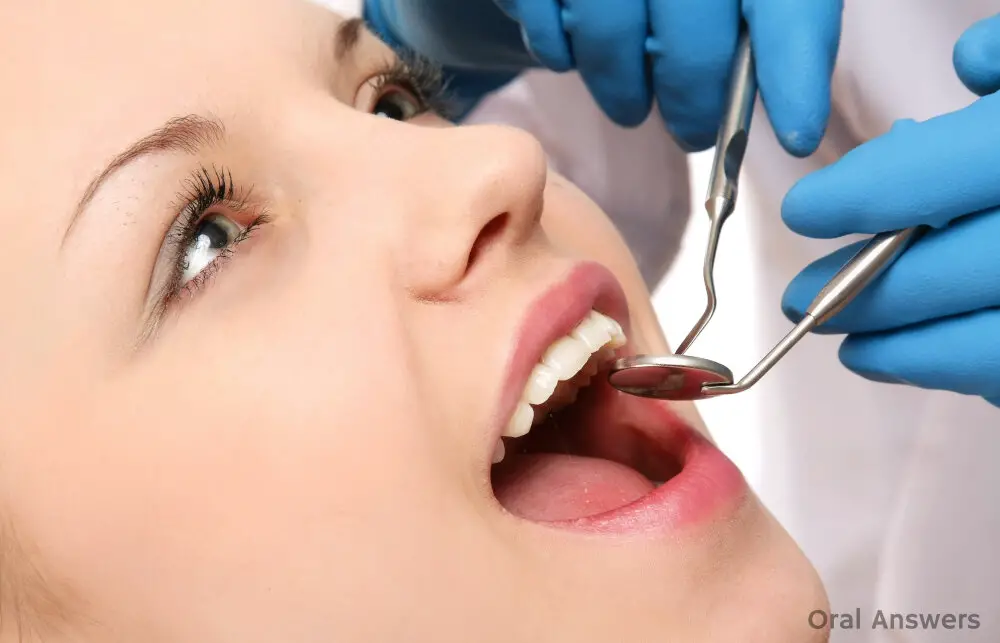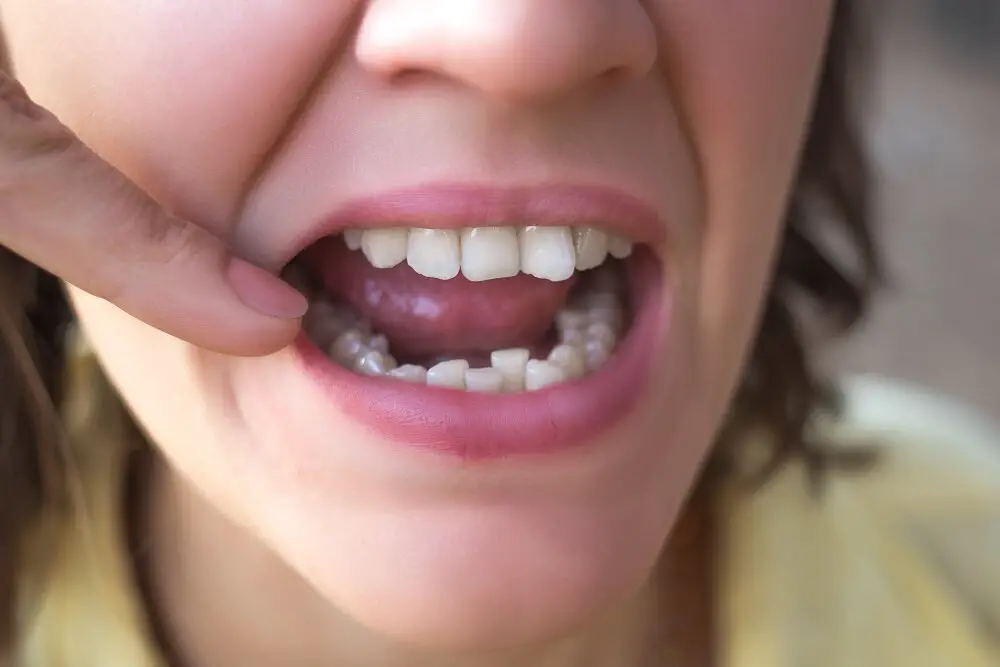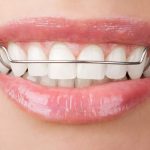Brace Yourself: How Long to Expect Teeth Pain After Tightening

Braces are a common orthodontic treatment used to correct dental issues such as crooked teeth, overbite, and underbite. However, the process of getting braces can be uncomfortable and even painful at times. One of the most common discomforts associated with braces is teeth pain after tightening. This pain can be mild or severe and can last for several days, making it difficult to eat, speak, and even sleep. Teeth pain after tightening is a normal part of the orthodontic treatment process. When braces are tightened, they apply pressure on the teeth to move them into the desired position. This pressure causes the surrounding ligaments and tissues to stretch, resulting in discomfort and pain. The intensity and duration of the pain depend on various factors, such as the type of braces, the severity of the dental issue, and the individual’s pain tolerance level. In this article, we will explore how long to expect teeth pain after tightening and provide tips on how to manage the discomfort.
Orthodontic treatment is a specialized branch of dentistry that focuses on the correction of irregularities in the teeth and jaw. The goal is to improve the appearance, function, and overall health of the mouth. The most common type of orthodontic treatment is braces, which involve the use of wires, brackets, and bands to gradually move the teeth into the correct position. Other treatment options include clear aligners, retainers, and headgear. Orthodontic treatment can take anywhere from several months to a few years, depending on the severity of the case. During this time, patients may experience discomfort, soreness, and pain after tightening, but the end result is a beautiful and healthy smile.
The tightening process, also known as orthodontic adjustment, is a critical step in the journey towards achieving a perfect smile. During this procedure, an orthodontist will adjust the tension in the wires and brackets of your braces to align your teeth gradually. This process can cause some discomfort, as the teeth are being pushed into their new positions. It is normal to experience some pain and tenderness for a few days after the tightening. However, this discomfort can be managed with over-the-counter pain relievers, such as ibuprofen. It is vital to follow your orthodontist’s instructions carefully during this period to ensure the success of your treatment. With proper care and attention, you can minimize discomfort and achieve a beautiful, healthy smile.
Why Teeth Pain Occurs After Tightening

After getting braces, it is common to experience some degree of discomfort or pain. However, the pain can be more intense after tightening your braces. This is because tightening forces the teeth to shift into a new position, which can cause some soreness and sensitivity. The pressure from the tightened braces can also irritate the gums and surrounding tissues, leading to pain and discomfort. In addition, the wires and brackets of the braces can create friction against the teeth, causing even more discomfort. The duration and severity of the pain after tightening can vary depending on the individual and the degree of adjustment needed. It is important to note that the pain is temporary and should subside within a few days. Over-the-counter pain relievers, such as ibuprofen or acetaminophen, can help alleviate the discomfort. Additionally, eating soft foods and avoiding hard or sticky foods can reduce irritation to the teeth and gums. Proper oral hygiene, including regular brushing and flossing, can also help prevent further discomfort and ensure that the teeth and braces remain clean and healthy.
When braces are tightened, the orthodontist is applying a force to the teeth that will gradually move them into the desired position. This force is usually generated by the archwire, which is attached to the brackets on the teeth. As the archwire is tightened, it exerts pressure on the brackets, which in turn applies force to the teeth. This force causes the bone surrounding the teeth to remodel, allowing the teeth to shift into their new position. The amount of force applied during tightening will vary depending on the individual case, but it is typically enough to cause some discomfort or pain. It is important to follow any instructions given by the orthodontist and to take over-the-counter pain medication as needed to manage any discomfort.
Tooth movement and bone remodeling are closely related processes that occur during orthodontic treatment. When pressure is applied to the teeth through the use of braces or other orthodontic appliances, the teeth begin to shift position within the bone. This movement stimulates the cells within the bone to remodel and change shape, allowing the teeth to move into their desired position. While this process is necessary for successful orthodontic treatment, it can also cause discomfort and pain as the teeth and bone adjust to the new pressure. However, this discomfort is temporary and typically subsides within a few days after an adjustment appointment.
How Long the Pain Lasts

After getting braces tightened, it is natural to experience some discomfort and pain. But how long does this pain last? Well, it depends on several factors such as the severity of the tightening, the type of braces you have, and your pain tolerance level. Generally, the pain can last anywhere from a few days to a week. The first 24 to 48 hours usually tend to be the most uncomfortable, and then the pain gradually subsides. During this time, it is essential to take care of your teeth and avoid eating hard or sticky foods that may cause further discomfort. You can also try using over-the-counter pain relievers or applying ice packs to the affected area to alleviate the pain. It is important to note that the pain and discomfort experienced after getting braces tightened are completely normal and a sign that your teeth are gradually shifting into their desired position. However, if the pain persists for more than a week or becomes unbearable, it is advisable to contact your orthodontist. They may be able to adjust your braces or prescribe stronger pain medication to help manage the pain. Remember, patience is key when it comes to braces, and the end result will be worth the temporary discomfort. So, brace yourself and stay strong during this period, and before you know it, you’ll have a beautiful, healthy smile to show off.
After getting braces tightened, it’s not uncommon to experience varying degrees of pain and discomfort for a few days to a week or more. Typically, the first day or two following the tightening procedure are the most uncomfortable, with the pain gradually subsiding over the next few days. Some people may experience soreness and sensitivity when biting or chewing, while others may feel discomfort when their teeth come into contact with something cold or hot. It’s important to take care of your teeth during this time, avoiding hard or sticky foods that could damage your braces or cause further discomfort. Over-the-counter pain relievers, such as acetaminophen or ibuprofen, can also help alleviate pain and swelling.
The duration of pain after teeth tightening can vary widely depending on several factors. Firstly, the extent of the tightening can determine the level of discomfort experienced, with more significant adjustments resulting in more pain. Secondly, individual pain thresholds can play a role, with some people experiencing more pain than others. Thirdly, previous dental work, such as fillings or root canals, can affect the level of pain experienced as well. Additionally, the level of care taken in maintaining oral hygiene after tightening can impact pain duration, as inflammation and infection can prolong discomfort. Finally, the type of braces used and the overall condition of the teeth can also play a role, as more complex cases may require more significant adjustments and longer recovery times.
Tips for Managing Pain

Managing pain is an essential aspect of healthcare, especially for patients who have undergone dental procedures. The discomfort and pain associated with tightening braces can be a daunting experience. However, there are ways to manage the pain effectively. One of the crucial tips is to take over-the-counter painkillers, such as ibuprofen, aspirin, or acetaminophen. These medications can help reduce inflammation and alleviate pain. It is vital to follow the recommended dosage and avoid exceeding the prescribed limit to prevent adverse side effects. Another useful tip for managing pain after tightening braces is to use ice packs. Applying ice packs to the affected area can help numb the pain and reduce swelling. Patients can wrap ice packs in a towel and apply them to the cheeks for about 15-20 minutes at a time. It is important to take breaks between the sessions to prevent skin damage. Additionally, patients can rinse their mouth with warm salt water to reduce inflammation and promote healing. These simple tips can help patients manage pain effectively and improve their quality of life after tightening braces.
Over-the-counter pain relief options can provide temporary relief for tooth pain after tightening. Nonsteroidal anti-inflammatory drugs (NSAIDs) such as ibuprofen or aspirin can help reduce inflammation and alleviate pain. Acetaminophen can also be effective in reducing pain, but it does not have anti-inflammatory properties. It is important to follow the recommended dosage and not exceed the maximum daily amount. Additionally, topical analgesics such as benzocaine can provide numbing relief directly to the affected area. However, it is important to note that overuse of these options can lead to adverse side effects and should only be used as directed.
There are several home remedies that can help reduce discomfort after tightening braces. One of the best ways is to rinse your mouth with warm salt water, which helps to soothe sore gums and reduce inflammation. Another effective remedy is to apply a cold compress to the affected area for 10-15 minutes several times a day. This will help to numb the pain and reduce swelling. Additionally, you can try eating soft foods, such as soup, yogurt, or mashed potatoes, and avoiding hard or crunchy foods that can irritate your teeth and gums. Finally, over-the-counter painkillers such as ibuprofen or acetaminophen can also provide some relief from discomfort.
When to Seek Professional Help

If you experience significant pain and discomfort after getting your braces tightened, it is important to seek professional help. Your orthodontist is the best person to turn to when you are experiencing pain, as they can assess your teeth and determine the cause of the discomfort. In many cases, pain after tightening is due to the pressure that is being placed on your teeth as they are moved into the correct position. However, there are other potential causes of pain, such as infection or gum disease, which require prompt treatment to avoid further damage to your teeth and gums. Proper oral hygiene is also important when you are wearing braces, as it can help to prevent pain and discomfort. Brushing and flossing regularly can help to remove food particles and bacteria that can contribute to tooth decay and gum disease. If you are experiencing pain or discomfort after getting your braces tightened, it is important to seek professional help as soon as possible. With the right treatment and care, you can ensure that your braces are working effectively and that your teeth and gums remain healthy throughout your orthodontic treatment.
While it’s normal to experience some discomfort after getting braces tightened, there are certain signs that may indicate a problem beyond normal pain. If the pain is severe and persistent, it may indicate that the braces are too tight or that there is an issue with the placement of the brackets. Swelling and redness in the gums or cheeks can also be a sign of a problem, as can bleeding or sores in the mouth. If you experience any of these symptoms, it’s important to contact your orthodontist right away to address the issue and prevent further complications.
After undergoing orthodontic treatment, it is essential to attend follow-up appointments to ensure that the teeth are aligning correctly. During a follow-up appointment, the orthodontist will assess the progress of the treatment and adjust the braces accordingly. The orthodontist may also tighten the braces, which can cause discomfort and pain for a few days after the appointment. However, this discomfort is temporary and can be managed with pain medication or by using orthodontic wax to reduce irritation. During the appointment, the orthodontist will also provide instructions on how to care for the braces properly and may recommend additional treatments, such as teeth whitening or the use of clear aligners. Overall, follow-up appointments are crucial in ensuring that the orthodontic treatment is successful, and the teeth are correctly aligned.
In summary, after getting your braces tightened, it is normal to experience some discomfort and teeth pain for a few days. This is due to the pressure applied to the teeth to shift them into the correct positions. The intensity of the pain may vary from person to person, but it typically subsides within a week. It is recommended to take over-the-counter pain relievers, eat soft foods, and avoid hard and sticky foods during this time. Additionally, maintaining good oral hygiene by brushing and flossing regularly is crucial to prevent any further complications. Overall, patience and perseverance are essential in achieving a beautiful and healthy smile.
It is crucial for patients to communicate with their orthodontist regarding any concerns they may have regarding their braces. Orthodontic treatment is a long-term process, and it is not uncommon for patients to experience discomfort, including teeth pain, after tightening. However, patients should not suffer in silence. Orthodontists are experienced professionals who can provide patients with guidance and advice on how to manage their discomfort. Patients should feel comfortable discussing their concerns with their orthodontist to ensure they receive the best possible care. It is important to remember that orthodontic treatment is a team effort, and open communication between the patient and the orthodontist is essential in achieving the desired outcome.
Conclusion

In conclusion, tightening of braces is a necessary step in the orthodontic treatment process, but it can cause discomfort and pain for a period of time. While this discomfort is normal, it can be managed with over-the-counter pain medication, a soft diet, and good oral hygiene practices. It’s important to remember that the amount of pain and duration of discomfort can vary from person to person. However, with proper care and patience, the pain will eventually subside and you will be one step closer to achieving a beautiful, healthy smile. So, brace yourself for the discomfort, but know that it’s a temporary inconvenience for a long-term benefit.








